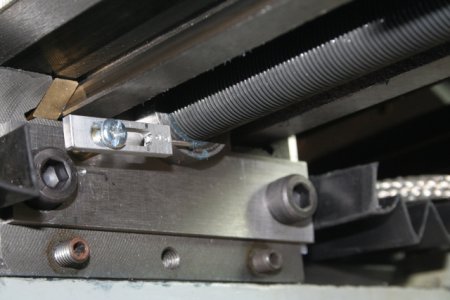- Joined
- Jul 28, 2017
- Messages
- 2,399
Sherline has a slightly different approach to an anti backlash nut design for their mills that might be useful for some other applications. They have a nut in the "usual" place, i.e., underneath the table. On the same axis, they have another nut on the exterior of the table. It is knurled on the OD. A thick washer, knurled on its OD is mounted on the exterior of the table such that the knurls are engaged, pretty much like gears. To remove the backlash, the screw holding the washer is slightly loosened and rotated to tighten the exterior nut, removing the backlash. Then the screw is retightened, locking the adjustment in place. There is no fundamental reason that the two nuts in an anti-backlash scheme have to be immediately adjacent to each other!
I used a similar scheme on the X axis of my mini mill: and now I can perform climb milling in steel, at least on that axis. Backlash is roughly .001 inch and has has been easy to keep that way, since the adjustment is point is easily accessible. The table design makes it relatively easy to mod the X axis in this fashion, not so much on the Y.
I used a similar scheme on the X axis of my mini mill: and now I can perform climb milling in steel, at least on that axis. Backlash is roughly .001 inch and has has been easy to keep that way, since the adjustment is point is easily accessible. The table design makes it relatively easy to mod the X axis in this fashion, not so much on the Y.


